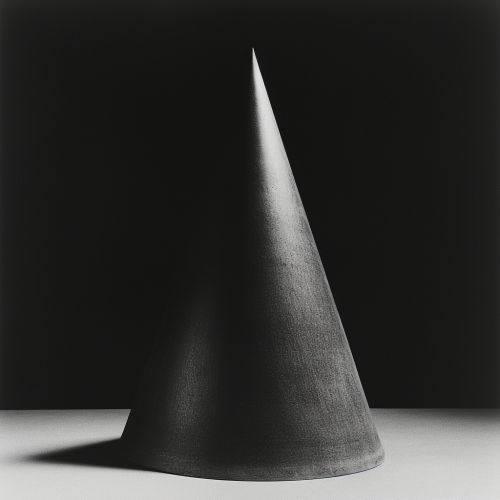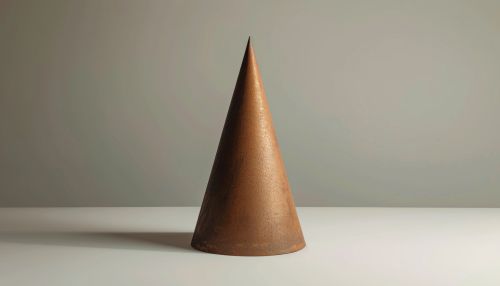Cone
Definition
A cone is a three-dimensional geometric shape that tapers smoothly from a flat base (frequently, though not necessarily, circular) to a point called the apex or vertex.
Mathematical Description
In mathematical terms, a cone is formed by a set of line segments, half-lines, or lines connecting a common point, the apex, to all of the points on a base that is in a plane that does not contain the apex. Depending on the context, "cone" may also mean specifically a convex cone or a projective cone.
Right Circular Cone
A right circular cone is a particular type of cone defined as a solid figure formed by all straight line segments joining the apex of the cone to points on a circular base. The axis of a right circular cone is a line segment that passes through the apex, connecting it to the center of the base. The base radius of a right circular cone is the radius of its base. Often, the term "cone" implies a right circular cone.
Oblique Cone
An oblique cone is a cone with an apex that is not aligned directly above the center of the base. The base can be any simple polygon, such as a square or hexagon, but is most often a circle.
Surface Area and Volume
The surface area and the volume of a cone can be calculated using the following formulas:
- The surface area (A) of a cone with base radius (r) and slant height (l) is given by the formula A = πr(r + l). - The volume (V) of a cone with base radius (r) and height (h) is given by the formula V = 1/3πr²h.
These formulas are derived using integral calculus and the principles of Euclidean geometry.
Cones in Nature
Cones are frequently observed in the natural world. For example, many types of trees, such as pines and firs, produce cone-shaped structures known as pine cones. These structures serve to protect and distribute the tree's seeds. Cones are also found in the animal kingdom, particularly in the visual systems of many species. The cone cells in the retina of the eye are responsible for color vision and function best in relatively bright light.
Cones in Engineering and Architecture
In engineering and architecture, cones are used in a variety of ways. For example, traffic cones are used to direct traffic around hazards or construction zones. In architecture, cone-shaped roofs are common in certain styles of buildings, particularly in religious architecture such as churches and mosques.
See Also


